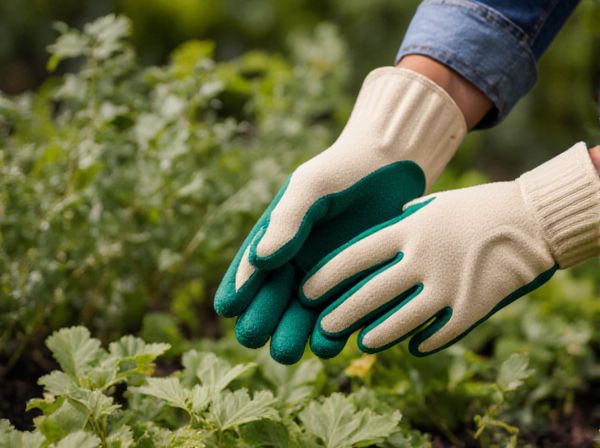
Damping Off vs Fusarium Wilt Illustration
Damping Off primarily affects seedlings, causing them to collapse and rot at soil level, typically due to fungal pathogens thriving in overly wet conditions. Fusarium Wilt attacks mature plants by invading the vascular system, leading to yellowing, wilting, and eventual plant death from internal blockages. Differentiating these diseases is crucial for effective management, as Damping Off requires improved drainage and seed treatment, while Fusarium Wilt control focuses on resistant cultivars and soil fumigation.
Table of Comparison
| Disease | Damping Off | Fusarium Wilt |
|---|---|---|
| Pathogen | Various soil-borne fungi (Pythium, Rhizoctonia, Fusarium spp.) | Fusarium oxysporum f. sp. (host-specific strains) |
| Host Stage | Seedlings and young plants | Mature plants |
| Symptoms | Seed rot, stem collapse at soil line, poor germination | Yellowing, wilting, vascular browning, stunted growth |
| Onset | Early growth stage | Throughout plant lifecycle, mostly mid-growth |
| Spread | Spores in soil, water splash | Soil, infected plant debris, contaminated tools |
| Control Measures | Seed treatment, well-drained soil, fungicides | Resistant cultivars, crop rotation, soil fumigation |
| Impact | High seedling mortality, poor stand establishment | Yield loss, plant death |
Understanding Damping Off and Fusarium Wilt
Damping Off is a seedling disease caused by soil-borne fungi such as Pythium, Rhizoctonia, and Fusarium species, leading to stem rot and collapse at the soil line. Fusarium Wilt is a vascular disease caused by Fusarium oxysporum, which invades plant xylem vessels, resulting in yellowing, wilting, and eventual plant death. Differentiating these diseases relies on recognizing symptoms: Damping Off affects seedlings early with stem lesions and damping at the base, while Fusarium Wilt develops later, showing systemic vascular discoloration and wilting in mature plants.
Key Symptoms: Damping Off vs Fusarium Wilt
Damping Off primarily causes the sudden wilting and collapse of seedlings, with symptoms including water-soaked, dark lesions near the soil line and a weakened stem base that easily breaks. Fusarium Wilt is characterized by yellowing and wilting of older leaves, vascular discoloration within the stem, and stunted plant growth as the pathogen blocks water transport. Both diseases affect plant health but differ significantly in their symptom onset and affected plant tissues.
Causes and Pathogens Involved
Damping off is primarily caused by soil-borne pathogens such as Pythium, Rhizoctonia, and Fusarium species that attack seeds and seedlings, leading to stem rot and collapse. Fusarium wilt is caused by Fusarium oxysporum f. sp. strains, which invade plant vascular tissues, blocking water transport and causing wilting symptoms. While damping off affects early plant stages through multiple fungi, Fusarium wilt specifically targets mature plants with a specialized Fusarium pathogen.
Lifecycle and Disease Progression
Damping Off primarily affects seedlings, caused by soilborne fungi like Pythium and Rhizoctonia, which infect seeds and young roots leading to rapid wilting and collapse shortly after germination. Fusarium Wilt is caused by Fusarium oxysporum, a fungal pathogen that invades the plant's vascular system, leading to gradual yellowing, wilting, and eventual plant death as the fungus spreads through the xylem vessels. While Damping Off rapidly kills young plants during or soon after emergence, Fusarium Wilt progresses slowly, causing chronic vascular dysfunction throughout the plant's life cycle.
Host Plants Susceptibility
Damping Off primarily affects seedlings of a wide range of host plants including vegetables like lettuce, tomatoes, and beans, causing rapid decay at the soil line. Fusarium Wilt targets established plants such as tomatoes, bananas, and cucurbits, leading to vascular wilting and yellowing symptoms. Host susceptibility varies with Fusarium species and cultivars, while Damping Off is more influenced by environmental moisture and soil conditions.
Environmental Conditions Favoring Each Disease
Damping Off thrives in cool, wet soil conditions with poor drainage and high humidity, often affecting seedlings during germination. Fusarium Wilt favors warm soil temperatures and dry conditions, with the pathogen persisting in soil and plant debris, causing vascular wilting in mature plants. Understanding these environmental factors aids in targeted disease management and prevention strategies.
Prevention Strategies for Damping Off
Effective prevention strategies for damping off include maintaining well-drained soil and avoiding overwatering to reduce fungal growth. Using sterile, disease-free seeds and treating them with fungicides lowers infection risk. Crop rotation and proper seedbed sanitation further minimize the presence of soil-borne pathogens responsible for damping off.
Prevention and Management of Fusarium Wilt
Fusarium Wilt prevention relies on resistant crop varieties and crop rotation with non-host plants to reduce soilborne inoculum. Soil solarization and biological control agents like Trichoderma spp. can suppress Fusarium oxysporum populations effectively. Proper sanitation of tools and irrigation practices that avoid waterlogging further minimize disease spread in affected fields.
Diagnosis: Differentiating Between Both Diseases
Damping off is diagnosed by observing seedling collapse at the soil line, accompanied by water-soaked lesions and a thin, decayed stem base, often causing rapid death in young plants. Fusarium wilt is identified through vascular discoloration inside stems and leaves exhibiting yellowing, wilting, and stunted growth, symptoms that develop progressively as the fungus clogs the plant's xylem vessels. Laboratory tests, such as pathogen isolation and microscopic examination, confirm the presence of Fusarium oxysporum in wilted plants, while damping off symptoms are usually confirmed through environmental conditions and seedling stage observations.
Best Practices for Healthy Seedlings and Mature Plants
Implement crop rotation and use disease-free seeds to prevent Damping Off and Fusarium Wilt, ensuring healthy seedlings and mature plants. Maintain well-drained soil and avoid overwatering to reduce pathogen proliferation, while applying appropriate fungicides as needed. Regularly monitor plants for early symptoms and promptly remove infected individuals to minimize spread and enhance overall plant health.
Damping Off vs Fusarium Wilt Infographic

 gardendif.com
gardendif.com